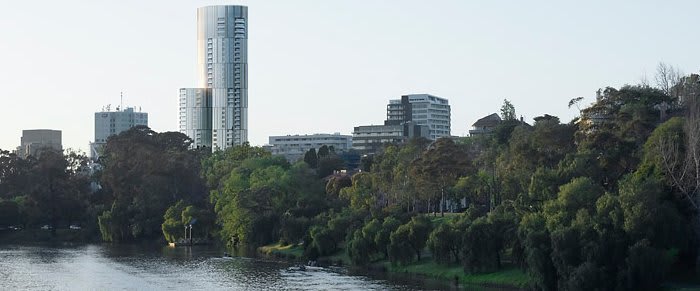Sixth time lucky at the Fun Factory?
A few games of Street Fighter II, killing your mates in Phaser Strike and throwing up on the Gravitron (with "Ice Ice Baby" blaring in the background) was a dream day out when growing up in Melbourne in the 1980's and 1990's. And the only place you could have all this was the Fun Factory on the Corner of Chapel Street and Toorak Road in South Yarra.
But the fun was not to last as Chapel Street became the place to be seen in Melbourne in the 1980's, developers started hatching plans to redevelop the massive Fun Factory Site. In 1989 a permit was issued for the demolition of the building and the development of a 15 storey apartment tower. However the Recession through the early 1990's meant that this plan was never built and the Fun Factory lived on. By 1999 economic conditions had improved and the owners of the site proposed a massive mixed use redevelopment of the site including a 42 storey tower. City of Stonnington officials were not ready for this scale of development and the application was promptly refused by Council.
Subsequently Fender Katsalidis Architects were employed to deliver a new design, they being at that time the go-to architects for getting difficult proposals through the planning system. A new plan was hatched that incorporated a retail podium with a 27 level, 91 metre high apartment tower rising above. The application was approved by the City of Stonington in 2001. A local residents group appealed the decision, but VCAT upheld Council's decision.
This development was also never built and by 2008 the owners of the site commissioned yet another proposal for the site. This time they employed Bates Smart Architects to design a redeveloped Fun Factory consisting a retail podium with a 9 storey office building and a 39 storey apartment tower rising above. At 134 metres high, the main tower would have easily become the tallest building outside of the central city area. This proposal was refused by the City of Stonnington despite the recommendation of Council officers who supported the application. That decision was overturned by VCAT on appeal in late 2009.
By late 2010 the project was known as The Capitol and apartments in the main tower were on sale to the public. Marketed as a high end luxury development with large, it contained well-appointed apartments with even larger penthouse apartments on the upper floors. Joint developers including APN Property Group were optimistic about the prospects of the development and around the same time applied to VCAT to increase the height of the tower to 151m by adding an additional 5 penthouse levels. This application was refused by Council and the refusal was upheld by VCAT who saw the increase in height as going one step too far. The developer’s optimism proved to be unfounded and by the end of 2011 sales in the development were struggling to break to 50% mark and by the end of the year the development had been shelved.
With the developers considering all options including the sale of the site, they have instead submitted yet another application to amend the approved development. Amendments involve a significant increase in the number of smaller one and two bedroom apartments and a reduction in floor to ceiling heights. These intended changes will also simplify the buildings floor plans, remove the office component and split the development into two stages.
The developers are hoping that these measures will increase the broader market appeal and in turn the financial viability of the project, making apartments far easier to sell at a lower price range. Council voted on 20th May not to support the proposed amendments as they viewed the new scheme as watereing down the design intent of the original Bates Smart scheme, signalling that the architectural expression of the amended development will no longer produce an iconic podium tower development or a sculptural and slender building.
VCAT will now have a very difficult decision between insisting that any development on the site must have an exceptional standard of architectural design, even if that means the site may remain underutilised for another 24 years, or accepting that it was not realistic to expect such a high standard of design would be economically viable and that in order to achieve the objective of providing more dwellings in existing activity centres that the amended design will be good enough. Time will tell...
